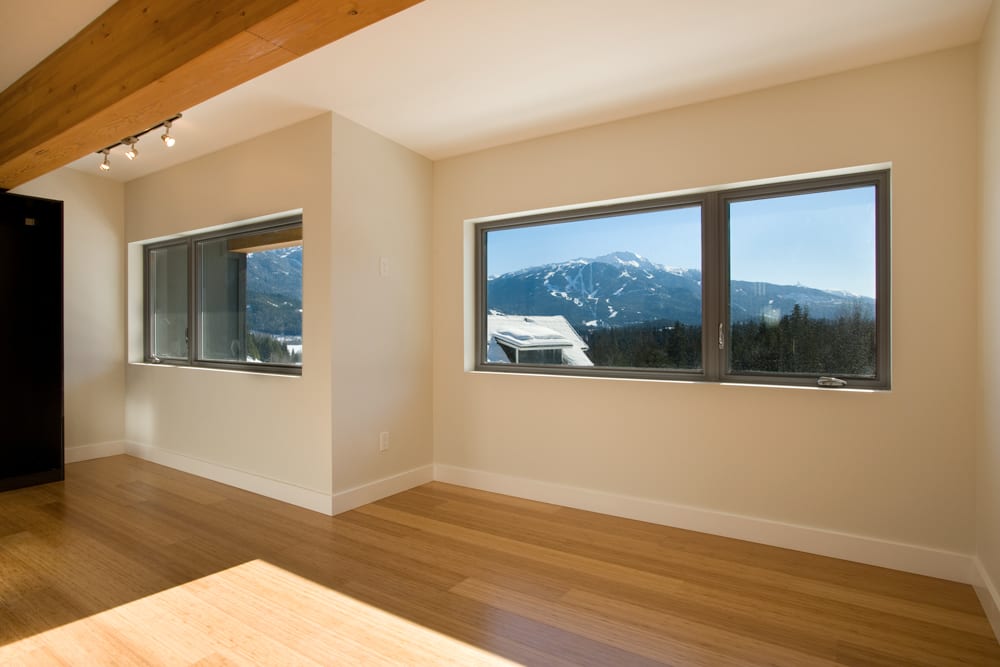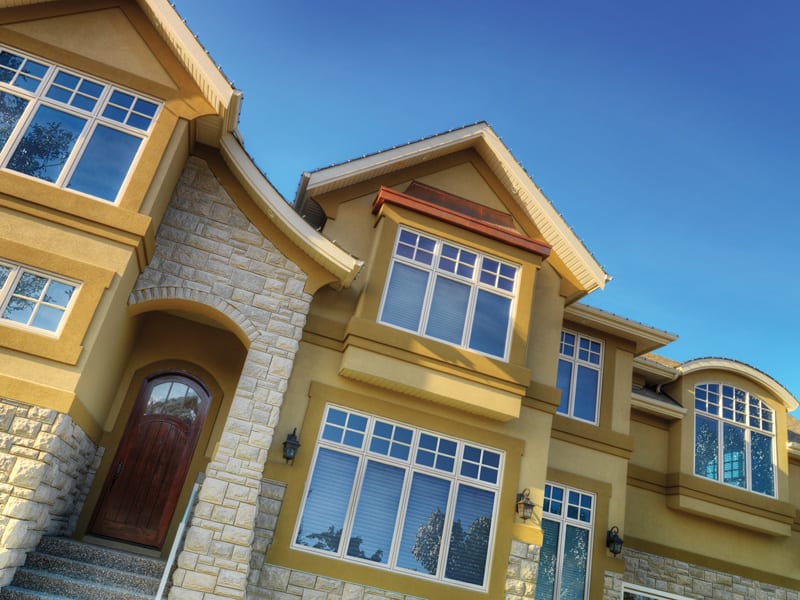Years ago, when I was writing the first version of the Glazing Systems Specifications Manual for the Glazing Contractors Association of B.C., an architect called me with a question:
“I want to specify a more solid, more robust window product for a high rise residential building. The A440 standard only gives me ABC ratings to work with. If that’s all I ask for, I’m going to end up with a cheap residential window. Is there some way I can specify a more solid-feeling window without naming specific products?”
I had been discussing the project with local specification writers, and as a result of those discussions he may have surmised that I would have an answer.
Unfortunately, at that time, I did not.
If I got the same call today, I would tell him about NAFS Performance Class.
(In this article, the terms NAFS and NAFS-08 refer to AAMA/WDMA/CSA 101/I.S.2/A440-08, NAFS—North American Fenestration Standard/Specification for windows, doors and skylights.)
What is Performance Class?
NAFS-08 gives architects and specifiers a new attribute, one we’ve never had before in Canadian standards, for selecting and specifying fenestration products: Performance Class.
But what exactly is Performance Class, and how do we use it?
Oddly enough, the NAFS standard does not provide us with a clear definition. To better understand it, let’s take a look at how this concept evolved in earlier American fenestration standards.
Some Historical Context
The term first appeared in 1985, in a standard known as ANSI/AAMA 101-85, Voluntary Specifications for Aluminum Prime Windows and Sliding Glass Doors, though at that time the terms Performance Class and Performance Grade had the opposite meanings they have today. What NAFS today calls Performance Class was intended to “denote the product’s intended application: R for Residential, C for Commercial and HC for Heavy Commercial.”
More importantly, in this first introduction to the concept, its purpose was stated most clearly: “[Performance Class] provides the specifier with a uniform basis from which to compare the performance of different manufacturers’ windows of the same [class] and type, a valuable equalizer when evaluating various suppliers.”
The oldest standard in my library that uses the term Performance Class with its original designations is 101/I.S.2/NAFS-02, Voluntary Specification for Windows, Skylights and Glass Doors. At that time (2002) there were five classes, designated as follows:
| R | = | Residential |
| LC | = | Light Commercial |
| C | = | Commercial |
| HC | = | Heavy Commercial |
| AW | = | Architectural |
This classification system was intended to allow the purchaser or specifier “to select the appropriate level of performance depending on climatic conditions, height of installation, type of building, etc.”
Why take this trip back in time? Well, it is helpful for Canadian readers of NAFS to have some historical context. The 2008 version of NAFS that is referenced in Canadian building codes based on the 2010 NBC provides us with four Performance Class designations: R, LC, CW and AW. The problem is it no longer provides any clue as to what these acronyms meant in the past, or the significance they still convey to American users of the standard.
What NAFS-08 says about Performance Class
The descriptive words “Residential” through “Architectural” were dropped from Performance Class descriptions in NAFS starting with the 2005 edition. Why was that? To prevent an overly literal application of Performance Class to building type.
According to the Performance Class Overview page of the AAMA website, “the descriptions were deleted, as the choice of Performance Class is made independently of the use of a building.”
Here’s what NAFS-08 tells us about Performance Class on page 2 of the standard. I am quoting this passage because there is no better way to demonstrate the qualitative and subjective way NAFS suggests we use this attribute (emphasis added):
“This Standard/Specification defines requirements for four performance classes. The performance classes are designated R, LC, CW, and AW. This classification system provides for several levels of performance. It is important to note that although general suggestions for use are specified in Items (a) to (d), product selection is always based on the performance requirements of the particular project and not solely on these suggestions. The performance class ratings should be regarded as an indication of the level of performance, with the least stringent requirements established for the R performance class and the most stringent for the AW performance class. The following descriptions can be used as a general guide in helping to determine which class is likely best suited for a particular application:
R: commonly used in one- and two-family dwellings.
LC: commonly used in low-rise and mid-rise multi-family dwellings and other buildings where larger sizes and higher loading requirements are expected.
CW: commonly used in low-rise and mid-rise buildings where larger sizes, higher loading requirements, limits on deflection, and heavy use are expected.
AW: commonly used in high-rise and mid-rise buildings to meet increased loading requirements and limits on deflection, and in buildings where frequent and extreme use of the fenestration products is expected.”
As you can see, the suggested application language is qualitative, imprecise, and somewhat subjective. After all, what does “larger sizes and higher loading requirements” really mean? What constitutes “heavy”, “frequent” or “extreme” use? As you read on it will become clear that while Performance Class test criteria are very precise, the selection of Performance Classes for specific buildings is not at all a precise or clear-cut matter.
It is also a decision that has implications for frame material and product cost.
What the Building Code says about Performance Class
The Building Code (2010 NBC and 2012 BCBC) states in 9.7.4.3.(3):
“The minimum level of performance required for windows, doors and skylights shall be that of the Performance Class R.”
It says nothing more about Performance Class anywhere, not even in Part 5. It appears the Building Code is not particularly concerned with Performance Class.
The Code is, on the other hand, very concerned that Performance Grades—the air-water-structural performance of fenestration products—must be “appropriate for the conditions and geographic location in which the window, door or skylight will be installed”, and points us to the Canadian Supplement for how Performance Grades are to be determined in both Part 9 (9.7.4.3.(1) ) and Part 5 (5.10.2.2.(2) ).
Four classes of . . . durability?
Performance Class is a classification system that evaluates product on the basis of progressively greater ability to resist wind pressure, water penetration, and for certain operable products—greater resistance to wear and abuse. For these reasons, I think it is helpful to think of Performance Class as a classification that ranks products on the basis of durability.
The table below summarizes what NAFS-08 has to say about the application of Performance Class, and in the far right column is how I would summarize the NAFS suggested application of each.
| Class | NAFS “Suggested” Application | Original Designation | Connotation |
|---|---|---|---|
| R | One and two family dwellings | Residential | “Light Duty” |
| LC | Low-rise and mid-rise multi-family dwellings and other buildings where larger sizes and higher loading requirements are expected | Light Commercial | “Moderate Duty” |
| CW | Low-rise and mid-rise buildings where larger sizes, higher loading requirements, limits on deflection, and heavy use are expected | Commercial | “Heavy Duty” |
| AW | Mid and high rise buildings to meet increased loading requirements and limits on deflection, and in buildings where frequent and extreme use of the fenestration products is expected. | Architectural | “Severe Duty” |
Performance Class and NAFS Gateway requirements
Because Performance Class does not have a concise description or a precise application, we can get a clearer idea of what it signifies by taking a closer look at the qualification criteria to better appreciate the basis on which it differentiates fenestration products.
To qualify for a Performance Class, products must meet precisely defined qualification criteria, summarized in NAFS tables 1 and presented in full in Table 27. Additional requirements appear within the detailed descriptions of the various test methods in NAFS-08 Clause 5, Testing.
Table 1 in NAFS-08 presents the high-level gateway requirements in this way:
| Table 1 Gateway Requirements | ||||
|---|---|---|---|---|
| Product Performance Class | Minimum Performance Grade (PG) | Minimum Design Pressure (DP), Pa (psf) | Minimum Structural Test Pressure (STP), Pa (psf) | Minimum Water Resistance Test Pressure, Pa (psf) |
| Windows and Doors | ||||
| R | 15 | 720 (15.0) | 1080 (22.5) | 140 (2.90) |
| LC | 25 | 1200 (25.0) | 1800 (37.5) | 180 (3.75) |
| CW | 30 | 1440 (30.0) | 2160 (45.0) | 220 (4.50) |
| AW | 40 | 1920 (40.0) | 2880 (60.0) | 390 (8.00) |
| Unit Skylights, Tubular Daylighting Devices, and Roof Windows | ||||
| R | 15 | 720 (15.0) | 1440 (30.0) | 140 (2.90) |
| CW | 30 | 1440 (30.0) | 2880 (60.0) | 220 (4.5) |
The first thing you’ll notice is that each Class has a higher minimum Performance Grade, design pressure, structural test pressure, and water penetration resistance test pressure than the Class before. The second is that the Classes are ranked, with R having the least stringent requirements, followed by LC, CW and AW. Table 27, titled “Gateway performance requirements” and spread over six pages, goes much further, adding minimum test specimen sizes for each product type, as well as identifying which auxiliary tests apply to specific products at different classes.
Gateway requirements illustrated
To appreciate how these test requirements affect product design and construction it is helpful to illustrate the gateway requirements graphically. The illustration below shows how the minimum test criteria increase from one class to the next in the case of Fixed (non-operable) windows. When a criterion is increased from a lower Class to a higher one it is shown in orange. There is a similar progression in the minimum test sizes for all other product types in NAFS.
| R | LC | CW | AW |
|---|---|---|---|
| Minimum PG 15 | Minimum PG 25 | Minimum PG 30 | Minimum PG 40 |
| Min. test size: 1200 x 1200 |
Min. test size: 1400 x 1400 |
Min. test size: 1500 x 1500 |
Min. test size: 1500 x 2500 |
 |
 |
 |
 |
| Min. DP: 720 Pa (20 psf) | Min. DP: 1200 Pa (25 psf) | Min. DP: 1440 Pa (30 psf) | Min. DP: 1920 Pa (40 psf) |
| Deflection: Report Only | Deflection: Report Only | Deflection: L/175 | Deflection: L/175 |
| Min. Structural Test Pr: 1080 Pa | Min. Structural Test Pr: 1800 Pa | Min. Structural Test Pr: 2160 Pa | Min. Structural Test Pr: 2880 Pa |
| Min. Water Test Pr: 140 Pa (15% DP) | Min. Water Test Pr: 180 Pa (15% DP) | Min. Water Test Pr: 220 Pa (15% DP) | Min. Water Test Pr: 390 Pa (20% DP) |
| Max. Air Leakage: 0.2 L/s•m² @ 75 Pa | Max. Air Leakage: 0.2 L/s•m² @ 75 Pa | Max. Air Leakage: 0.2 L/s•m² @ 75 Pa | Max. Air Leakage: 0.2 L/s•m² @ 300 Pa |
Testing progressively larger products to progressively greater pressures requires frames, hardware and glass retention members to be progressively more robust.
Testing for progressively greater water penetration resistance requires better water management features, better weather sealing technology, and possibly more hardware locking points.
Introducing mandatory deflection limits to CW and AW Class products makes the frames and sashes stiffer, requiring more substantial framing members and possibly internal frame reinforcement.
Finally, requiring significantly greater airtightness of AW Class products requires additional attention to various design and construction factors, including closer control of tolerances. Yet none of these performance improvements can be made at the expense of operational ease: the operating force requirements do not change from class to class.
But that’s not all: there are several additional stress, stiffness, and operational cycling tests that apply to AW Class products only, to further distinguish them from the preceding classes.
While the illustration features fixed windows, the Performance Class qualifying criteria influence the design of operable products to a greater degree than they affect fixed glazing. It is not that difficult to achieve CW and AW requirements with a fixed rectangular window. But the increasingly demanding CW and AW requirements have a big impact on operable products, making them considerably more robust than R and LC products.
Performance Class and frame material
These progressively severe qualifying criteria ensure that there is an immediately noticeable, visible and haptic difference between products of different classes. In many cases CW and AW Class products are over-designed with respect to the wind and water loads on a particular building. But that is also what makes them more robust and more durable than lower class products. While NAFS is a material-neutral standard in that the performance requirements apply equally to products of any frame material, with only a very few exceptions, AW Class product lines are available in aluminum only. The qualification criteria are so severe that only robust aluminum products can meet them.
Product Class decisions also affect price. There is simply more material, technology and labour embedded in products that can meet the more stringent performance requirements of the higher classes.
So how do we use Performance Class?
The chief value of Performance Class to the architect and specifier is to be able to specify the durability and haptic properties desired for fenestration products with reference to an objective and material-neutral classification system. Products meeting the requirements of a particular Performance Class will have been evaluated, by testing, to the same minimum qualification criteria.
To quote again from ANSI/AAMA 101-85 which first introduced the concept:
“[Performance Class] provides the specifier with a uniform basis from which to compare the performance of different manufacturers’ windows of the same [Class] and type, a valuable equalizer when evaluating various suppliers.”
By specifying a Performance Class in addition to a Performance Grade, the range of available products is filtered to only those that have the desired class attributes. Performance Class facilitates apples-to-apples comparisons and greatly simplifies the task of evaluating proposed equivalents or substitutions, assuring designers that products of the same Class have been prequalified to the same minimum qualification criteria by rigorous testing. And this is truly useful, whether the specified class is LC, CW, or AW.
Credits
Thanks to Andrea Rhodes, Technical Services Manager at the American Architectural Manufacturers Association (AAMA) who kindly provided me with several historical documents to assist in the preparation of this article.



